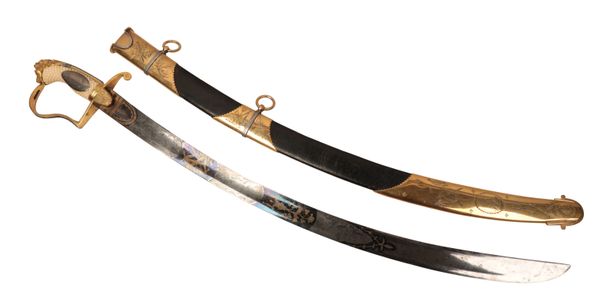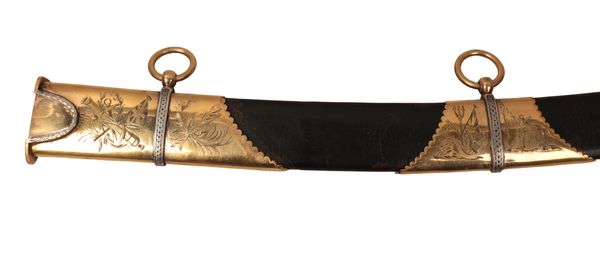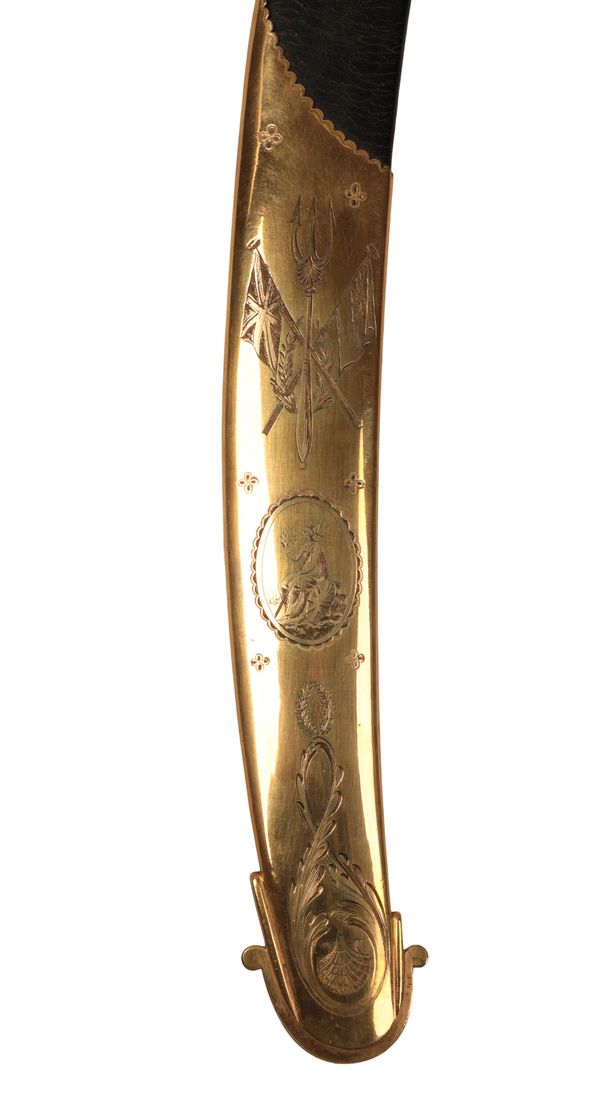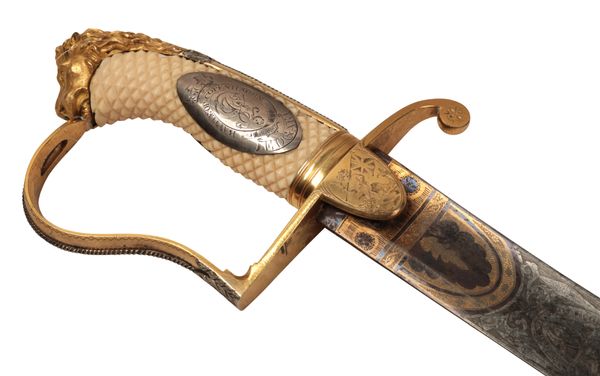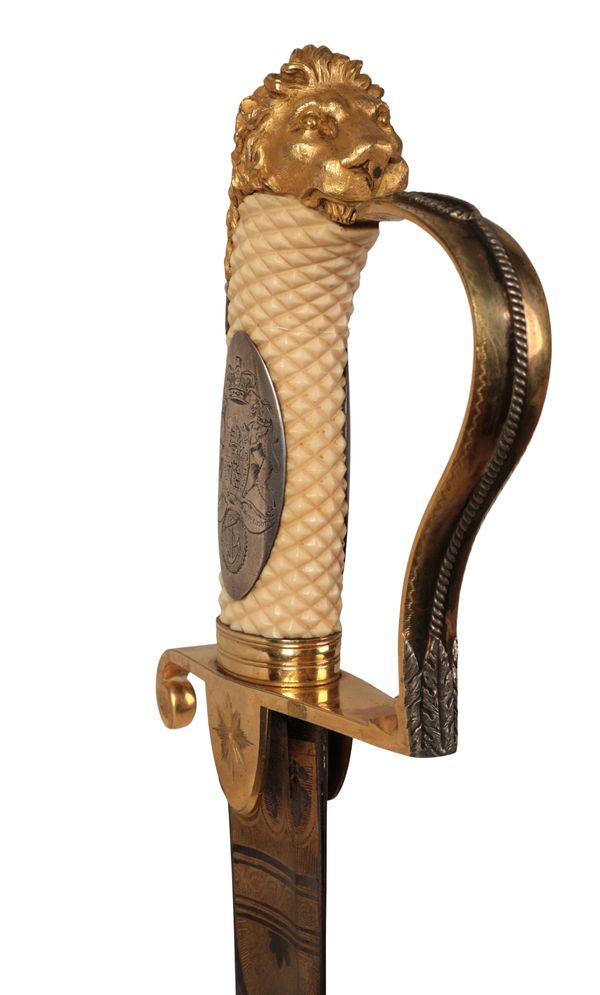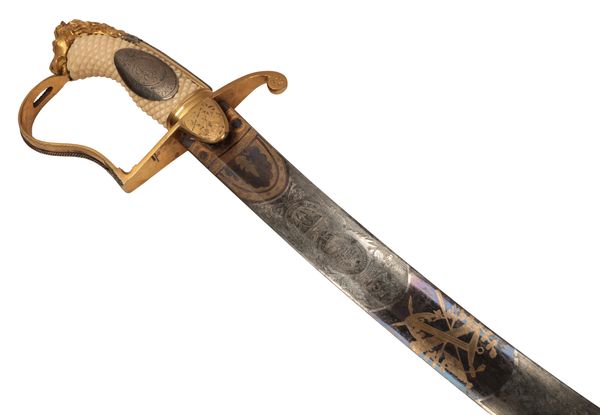almost certainly awarded to Midshipman James Proctor,
| Estimate: | £60,000 - £80,000 |
the curved sword with blued steel German blade, ivory cross-hatched grip bearing silver and gilt mounts in the form of a lion’s head and mane and mounted with an oval silver plaque engraved with the coat of arms (1801-1816 pattern) of King George III supporting a medal decorated with a fouled anchor; the reverse with a similar plaque engraved with the monogram “JP”, probably for Midshipman James Proctor, surmounted by a naval coronet, within a garter inscribed ‘Battle of Copenhagen’ above the ship’s name ‘EDGAR’. The top of the blade signed in gilt ‘J.J. Runkel Solingen’, with belt and slings in a fitted mahogany box lined in green velvet, the sword 94cm long
Ivory submission reference: 27PA12UF
James Proctor (died before 1814), the likely recipient of this presentation sword, was midshipman in HMS Edgar, 74 guns, which led Nelson’s division at the Battle of Copenhagen in April 1801. As the first ship to engage the enemy, Edgar sustained extensive damage and suffered 142 casualties including one lieutenant killed, another whose arm was shot away, and five midshipmen wounded. Among the wounded was Proctor who, given the officer losses, may have demonstrated outstanding leadership for which he received this sword, possibly from his grateful commanding officer Captain James Murray. Proctor recovered from his wound, was promoted to lieutenant and by March 1805 was serving in Spencer, 74 guns, attached to Nelson’s fleet in the Mediterranean. However, with many of the crew suffering from scurvy and fever, Spencer was sent away to re-victual just days before Trafalgar. The ship subsequently joined Admiral Duckworth’s squadron for the Battle of San Domingo in February 1806. Presented before the institution in 1803 of Lloyd’s Patriotic Fund, this sword is an example of an unofficial presentation made on an ad hoc basis by a senior officer following an action. To Nelson’s dismay, the Battle of Copenhagen was not recognised with a gold medal and, unlike the Nile, it was not widely commemorated making relics connected to the action rare.
Johann Justus Runkel (1751-1808)
Born in Germany Runckel emigrated to Britain as an importer of swords and sword blades from Solingen. He set up shop at 8 Tookes Court, Castle Street, Holborn where he sold swords to military officers and unmounted blades to other English cutlers including Thomas Gill. Despite fines, court cases and confiscation of blades for undervaluing imports, he was one of the most important merchants involved in the trade of Solingen blades in London and became a freeman of the Cutlers Company in 1796.


